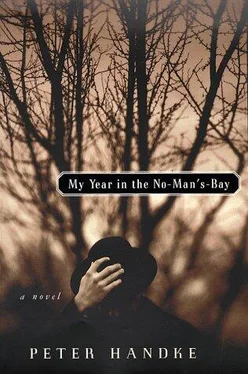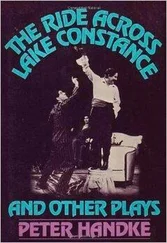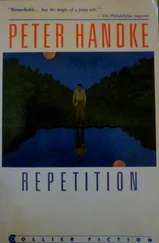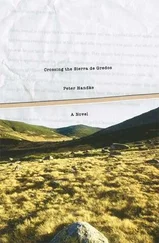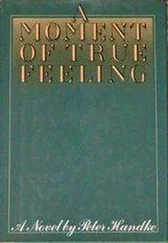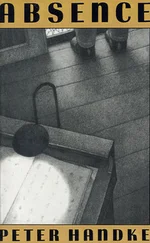The greatest outburst of anger he had witnessed up to now in his life had come from a priest. It had happened during religion class, in the school in his native village, and the perpetrator had been that priest who was the epitome of gentleness, and not only in the eyes of the children. Instead of singing a psalm as usual, to put himself and the class in the right mood for the reading and narrating from the Bible, he posted himself in front of the class, at first without a word, his briefcase closed and his face disconcertingly red, and it became redder and redder as he broke into shouts so loud that they shocked even these farm children, accustomed to quite a bit from home. Every single one of them cringed, and was overcome with fear and horror, which grew from moment to moment, for the entire hour; for that was how long the priest screamed at the assembled children, without pausing for breath. At first they could make out only individual phrases here and there, like “Judgment Day,” “brood of vipers,” “end of the world,” “wailing and gnashing of teeth,” “spew forth!” and only near the end, when he began to tell a story, though still full of wrath, raging and yelling, did it become clear what this was all about: the previous day, upon entering the deserted church, he had caught one of the village children in front of the altar, thumbing his nose and sticking out his tongue at Christ on the Cross. But it was not a simple childish prank; the longer the priest raved, the more the listeners came to see it as the worst offense possible, which could lead only to eternal damnation. Although he indicated that he had recognized the blasphemer, and he was seated there among the others, he did not name him and even avoided looking at anyone in particular. Even though the last word he spoke in this hour was “Vengeance!” repeated several times, he stressed that the avenger would be someone else. And they all felt implicated; each one slunk away, sure that he was guilty of sticking out his tongue at the Lord from the shadows, and maybe even spitting at Him; even he, who later became a priest himself, and in those days was already the “child of Siebenbrunn,” the one with natural piety, had at the very least been an accessory to the crime, and from now on it was all over for him with what had been in his eyes the “greatest fun,” the Mass?
Not only a believer but also a little propagator of the faith, or one who animatedly told anyone who would listen about his faith, that was what he had been as the child of Siebenbrunn.
The church, at some distance from the village, at the foot of a hill from which, as the place’s name indicated, in bygone times seven springs had actually burst forth, next to the farm of his father, who was also the sexton, from the beginning represented for him an extension and special part of the family holdings; very early on he was entrusted with the key to it: over the centuries erosion had piled up earth around the little sanctuary, more and more cutting down the size of the door; the threshold had been raised, and as a result the keyhole was low enough for him to reach. But for a long time he kept his distance from everything inside the church, and touched nothing. It was his father alone who rang the bells, laid out the priest’s robes for Mass, changed the flowers, lit the candles. The boy did not even feel drawn to be an acolyte, and whenever he substituted for someone, finding himself unexpectedly too close to the altar, especially the gilded tabernacle, in whose hollow interior he could actually sense the Holy of Holies, he would feel like an interloper; and he became terribly clumsy, pouring wine on the priest’s fingers, spilling incense on the altar steps, and during the entire Mass was scooping up the pellets there before the eyes of the congregation.
The child of Siebenbrunn felt at home only way in the back of his church, whether during Mass, in the course of which he regularly experienced an altered state, by the “Kyrie eleison!” if not sooner, or when contemplating the old paintings, also the frescoes and wood carvings. Before he even learned to spell, he took the situations they portrayed as fact: that was how it had been, that was the only story worth telling, and even if he later found that it was not documented in the specific wording of the Bible, he continued to read the pictures from his church as piously as the Bible. It was thus a certainty that when Jesus was baptized in the river Jordan, an actual dove spread its light-radiating wings in the clouds overhead, that upon Jesus’ entry into Jerusalem a youth waved to him from the top of a tree with a palm frond, that when the Blessed Virgin breathes her last, her soul will escape from the lower part of her body in the form of a tiny child, who will in the same moment have already taken his place on the lap of the Almighty up above in the firmament.
And the child of Siebenbrunn told these stories to others for years and years, including to those who passed through that desolate place by chance. He invited the other person, the adult, into his church, so to speak, positioned him in front of the pictures, and recited and intoned their stories from the background, in a voice that emerged from an uninterrupted conversation with himself, which simply happened to become audible from time to time. He believed without reservation and serenely in these pictures — there could be no greater serenity — and lived in a continual state of joy, perceptible also to outsiders. Nothing could shake the faith of the child of Siebenbrunn; it was innate. With its first mirroring in the pictures of faith, life “was manifested,” as it said at the beginning of the First Epistle of St. John, a saying he later adopted as his motto. With him, at any rate, a loss of images remained impossible.
Or perhaps not? That “life was manifested”: did it not apply to “the Word” rather than to images? Had he, the priest, kept joy alive for himself? “Not really” (he now thought, in the middle of morning Mass, at the admonition “Lift up your hearts!”), “or at least not always.”
Did the child of Siebenbrunn still exist? Where was he? And what had become of him? No, nothing could become of him other than what he already was in the beginning! But then how did it happen that nowadays, if he returned to the area of his childhood at all, he tended to avoid his Siebenbrunn and instead sought out the church in the neighboring village, which was almost devoid of pictures, a church that had Job as its patron saint?
Not once had the child imagined in those early days that the priesthood would be anything for him, although that gentle and hopping-mad local priest had had an eye on him in this respect for a very long time, and then even treated him openly as one of the chosen, for instance because in catechism class he had answered the question as to where the Blessed Virgin had carried her son after the Immaculate Conception, not as the other children did with “in her belly,” but with “under her heart.”
Only a kind of yearning, unspecific, also undimmed by any troublesome hopes, was there. No question but that he would become a farmer right after finishing school, since his parents had both died young and his sister could not run the farm alone. Thus he lived for a decade, and then also fell in love with a girl, in fact from the village of Job, and the two wanted to marry. That he was always slightly absentminded did not trouble the young woman; she liked him that way.
What finally brought him to the priesthood was a lecture by an agrarian engineer for the young men of the area, given at the local community center and sponsored by the Agriculture Bureau. The title: “A Vocation for Farming.” First of all, it dawned on him that he lacked all the characteristics of a future farmer: unlike the others around him, he did not feel at all attracted to the fragrance of livestock; nor did his heart swell at the thought of ripening crops; nor did working outdoors make him happy or even proud; instead, he went about his work as if it were a sideline, like any day laborer, and his thoughts were usually somewhere else entirely.
Читать дальше
